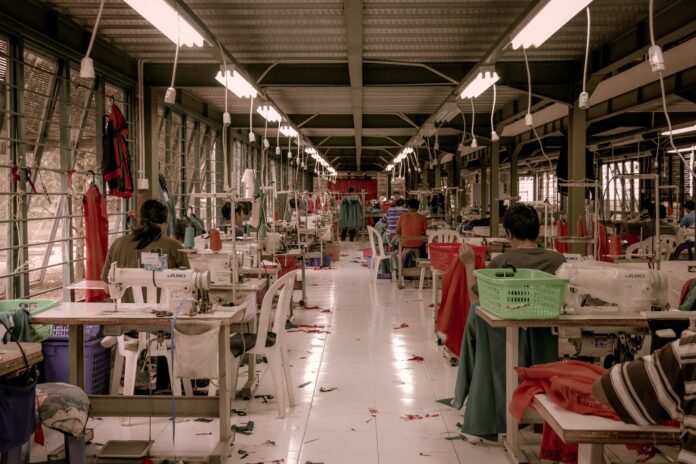Technology has revolutionized every aspect of our lives, including the fashion industry. With the advent of technology-enabled clothing, traditional garments have transformed into smart, interactive, and functional wearables that enhance the user experience. Technology-enabled clothing is a fast-growing trend that is set to revolutionize the fashion industry. In this article, we will explore the world of technology-enabled clothing in detail, including its definition, history, current trends, benefits, challenges, and future prospects.
Definition
Technology-enabled clothing refers to garments that are embedded with electronic components, sensors, and software that enable them to perform a range of functions beyond their basic aesthetic and protective properties. Technology-enabled clothing includes wearable devices, smart clothing, and e-textiles that incorporate various technologies, such as sensors, conductive fabrics, and wireless connectivity. Technology-enabled clothing can be worn as regular clothing and can provide users with additional features, such as biometric monitoring, activity tracking, and even communication capabilities.
History
The history of technology-enabled clothing can be traced back to the 1980s, when wearable computing began to emerge as a research area. Wearable computing involves the development of wearable devices that can be worn on the body to enhance user experiences. The earliest examples of wearable computing include the Personal Digital Assistant (PDA), which was introduced in the late 1980s, and the smartwatch, which was first launched in the early 2000s.
However, it was not until the advent of smart clothing in the 2010s that technology-enabled clothing began to gain mainstream attention. Smart clothing refers to garments that incorporate electronic components and sensors that enable them to perform a range of functions, such as activity tracking, biometric monitoring, and temperature control. Smart clothing has become increasingly popular in recent years, thanks to the development of new technologies and the growing demand for wearables that offer additional functionalities.
Current Trends
The current trends in technology-enabled clothing are driven by the growing demand for wearables that offer functionality, comfort, and style. Some of the most popular trends in technology-enabled clothing include:
Fitness and Wellness Wearables: These are wearables that are designed to track physical activity, monitor biometric data, and provide health insights. Fitness and wellness wearables include smart shirts, sports bras, and running shorts that incorporate sensors to track heart rate, respiration, and movement.
Smart Clothing: Smart clothing refers to garments that incorporate electronic components and sensors to provide additional functionalities, such as temperature control, lighting, and communication capabilities. Smart clothing includes products such as heated jackets, LED dresses, and connected jeans.
E-textiles: E-textiles refer to fabrics that are woven with electronic components, such as conductive threads and sensors, to enable them to perform a range of functions. E-textiles are used in products such as smart gloves, posture-correcting shirts, and safety vests that incorporate sensors to monitor movement and provide alerts.
Benefits
Technology-enabled clothing offers a range of benefits that traditional clothing cannot match. Some of the key benefits of technology-enabled clothing include:
Functionality: Technology-enabled clothing offers additional functionalities, such as biometric monitoring, activity tracking, and communication capabilities, which can enhance the user experience.
Comfort: Technology-enabled clothing is designed to be comfortable and functional, with features such as moisture-wicking fabrics, temperature control, and breathability.
Style: Technology-enabled clothing can be stylish and fashionable, with designs that incorporate electronic components and sensors seamlessly.
Sustainability: Technology-enabled clothing can be designed to be more sustainable, with features such as renewable energy sources, recycled materials, and energy-efficient components.
Challenges
Despite the benefits, technology-enabled clothing also faces several challenges. Some of the key challenges include:
Cost: Technology-enabled clothing can be expensive, with prices that are significantly higher than traditional clothing.
Maintenance: Technology-enabled clothing requires special care and maintenance, including charging, washing, and updating software, which can be time-consuming and inconvenient.
Privacy: Technology-enabled clothing collects and transmits sensitive data, such as biometric information, which can raise privacy concerns and require additional security measures.
Integration: Technology-enabled clothing may require integration with other devices and platforms, which can be challenging and may limit their compatibility with other technologies.
Future Prospects
The future of technology-enabled clothing looks bright, with new advancements and innovations being developed every day. Some of the future prospects of technology-enabled clothing include:
Integration with other technologies: Technology-enabled clothing is expected to be integrated with other technologies, such as augmented reality, virtual reality, and artificial intelligence, to enhance the user experience and provide new functionalities.
Increased sustainability: Technology-enabled clothing is expected to become more sustainable, with features such as renewable energy sources, recycled materials, and energy-efficient components.
Mass adoption: Technology-enabled clothing is expected to be adopted by more people, as the cost of production decreases and the benefits become more widely known.
Customization: Technology-enabled clothing is expected to be highly customizable, with users able to personalize their garments to meet their individual needs and preferences.
Conclusion
Technology-enabled clothing is a rapidly evolving field that is set to revolutionize the fashion industry. With the integration of sensors, electronic components, and software, clothing is being transformed into smart, functional, and interactive wearables that offer a range of benefits, including enhanced functionality, comfort, and style. While there are challenges to overcome, the future prospects of technology-enabled clothing are promising, with increased sustainability, mass adoption, and customization on the horizon. As technology continues to advance, the possibilities for technology-enabled clothing are endless, and the fashion industry is set to be transformed in ways we never thought possible.














